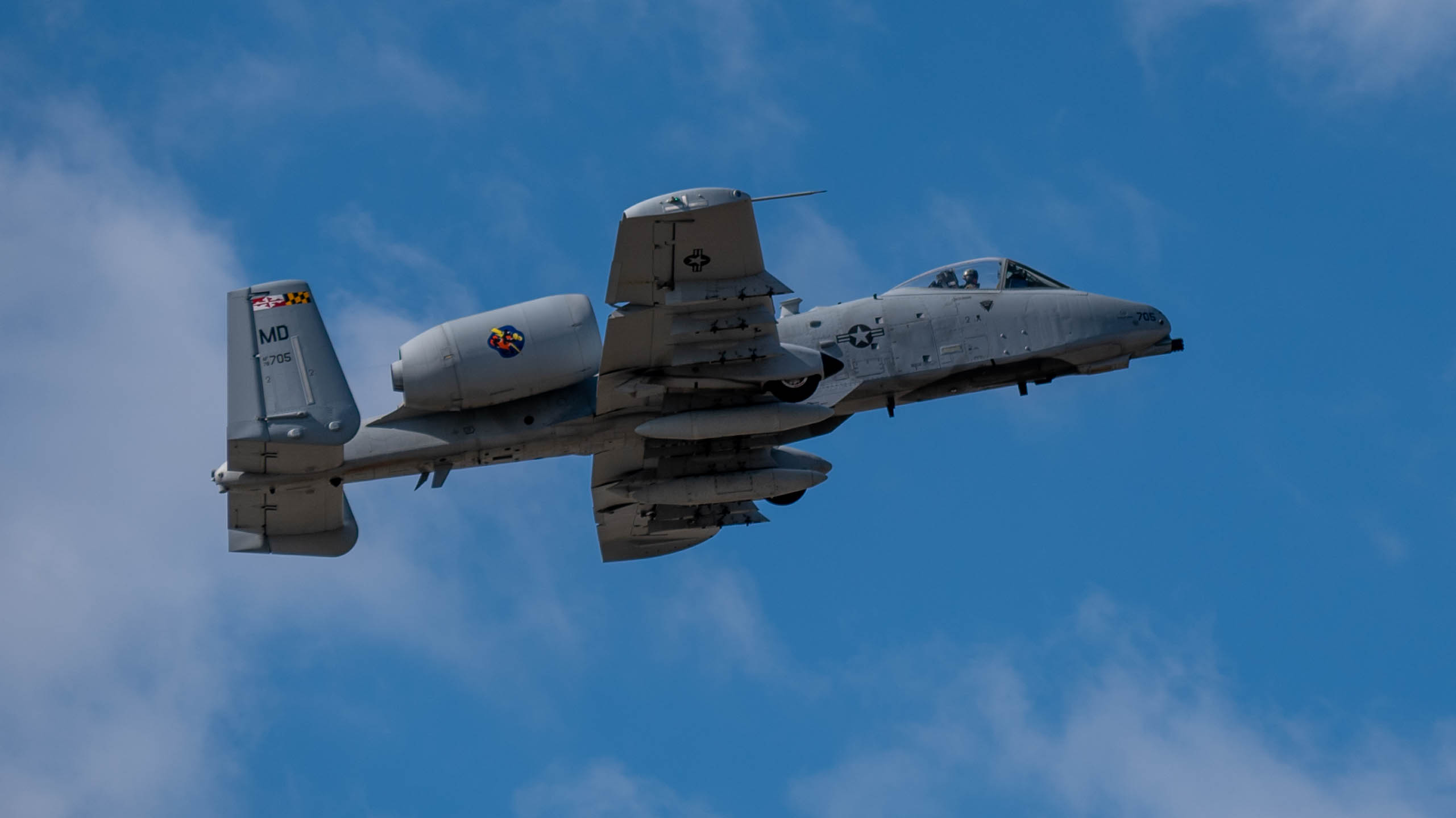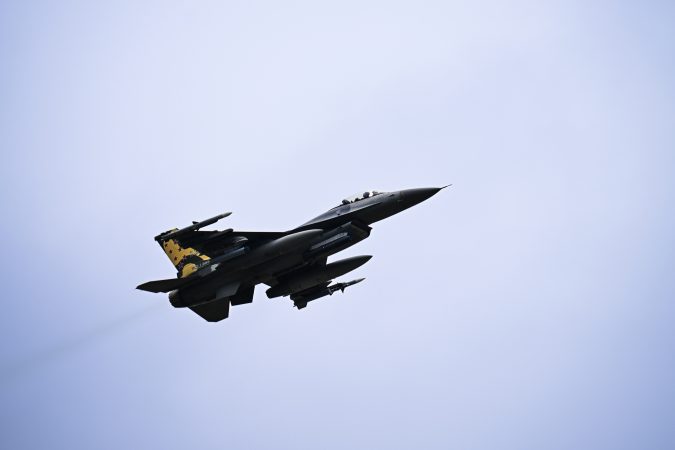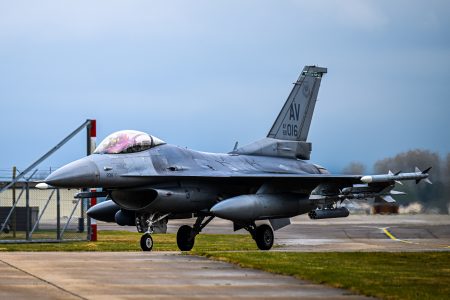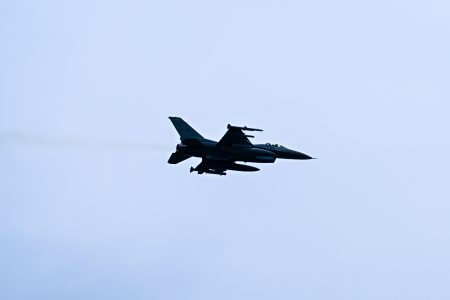COLORADO SPRINGS, Colo.—In the Space Force’s push to increase its consumption of commercial satellite capabilities, satellite communications stands out as the template.
“If you look at the commercial satellite communications industry, we’ve been integrated for quite some time, providing our services alongside MILSATCOM,” said Todd Gossett, of SATCOM provider SES Space & Defense. “We’ve seen, over the past decade, a much more purposeful integration of these commercial capabilities into the military alongside purpose-built capabilities [into] what we now call hybrid space architecture.”
The question now is how broadly the Space Force will look to leverage additional SATCOM providers.
Defense officials announced late last year they are expanding the Proliferated Low Earth Orbit (PLEO) Satellite-Based Services program from a maximum of $900 million to $13 billion, based on demand across DOD. But some worry that there is insufficient competition in the marketplace.
“From a strategic perspective, industry can meet those needs,” said Col. A.J. Ashby, senior materiel leader for strategic SATCOM, at the Space Symposium last week. “It’s just, how robust is that industrial complex to deliver those capabilities? What we don’t want to do is find ourselves in a situation where you have a single commercial provider that can deliver that capability, because if you find yourself in vendor lock, it could increase costs and delay delivering that capability to the warfighter. So we want to make sure that we have a robust and viable industrial base to deliver on all military capabilities.”
SES, Iridium Communications, Inmarsat, and Viasat are all well-established, decades-old providers. But as in the space launch business, a singular dominant player has also emerged in SATCOM. And it’s the same firm: SpaceX, with its massive Starlink constellation. Out of $660 million in task orders already assigned for the PLEO program, most went to SpaceX, a defense official said last fall. Among the program’s 20 approved vendors, no one is close to SpaceX right now.
“It’s just that SpaceX [and] Starlink was obviously first to market,” the official said at the time.
Other companies are racing to catch up. Amazon aims to launch thousands of its Project Kuiper satellites in LEO, but has not yet put one in space. Others, like Canada’s Telesat, have plans for a LEO constellation but are hoping to differentiate their offerings in other ways, president of government solutions Chuck Cynamon told Air & Space Forces Magazine.
“We are geared towards enterprise, government, and defense,” said Cynamon, adding that because Telesat waited to pivot to its low-Earth orbit constellation, it has seen new Pentagon requirements and strategy released in the past year or so that it can “factor … into our offering.”
Telesat’s Lightspeed constellation in LEO, scheduled to reach space in 2026, will have advantages for the military over Starlink or even its militarized cousin, Starshield, Cynamon claimed.
“One of the things that we think we’re offering that is a bit more unique … is the opportunity to offer a capacity pool, something that a government can own that would be sovereign,” Cynamon said. “So if the U.S. government owns a pool of capacity, whether it be bought by the volume or the throughput, it is theirs to own within the Lightspeed ecosystem…. They own the capacity, whether globally or regionally. They can sub-allocate it. So if you have various regions of the world that you want to concentrate your capacity,” the customer can do so.
Assured access to commercial services in the event of a conflict or crisis is a crucial concern for the Space Force as it seeks to integrate its options into a more seamless whole. U.S. Space Command boss Gen. Stephen N. Whiting said at the symposium that the Space Force is looking to leverage automation to gain flexibility and advantage.
“We are transforming our SATCOM resiliency by moving away from labor-intensive methods using stovepiped systems to automated systems that can maneuver between orbits and between different frequency bands to outpace our adversaries,” said Whiting. “Making SATCOM missions more robust and responsive and resilient is vital to meet the needs of our joint force on tactically relevant timelines.”
Charlotte Gerhart, deputy director of military communications and PNT, highlighted that same approach for the Space Force’s tactical SATCOM requirements. “Our ability to put capability wherever we need to, when we need to do it, that mobility aspect, is one of the key things that we look at,” she said. “ … Our ability to command and control without being, for lack of a better term, constrained by other users on the system.”
The Space Force is working on a “hybrid” SATCOM terminal that can shift between multiple frequencies and connect with both military and commercial constellations. So is the Navy, presenting opportunities for scale but also challenges to coordinate between the services.
Cynamon and others in industry are urging Pentagon decision-makers “not to lock yourself into one provider terminal today,” such as Starlink’s dedicated SpaceX terminal. Telesat, he said, intends for its Lightspeed constellation to be terminal-agnostic, giving military customers more flexibility.
Yet SpaceX’s ubiquity and proven performance are winning warfighting customers. The Air Force has used Starlink for forces everywhere from Europe to the Indo-Pacific, and in 2023 the Space Force awarded SpaceX a $70 million contract for Starshield. Breaking that lock will be a lucrative business for others, but competing for market share will be hard given Starlink’s head start.



























